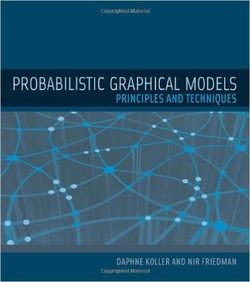مدلهای گرافیکی احتمالی

بیشتر وظایف، برای رسیدن به نتیجهای براساس اطلاعات موجود، نیاز به یک شخص یا یک سیستم خودکار دارند. چهارچوب مدلهای گرافیکی احتمالی ارائهشده در کتاب “مدلهای گرافیکی احتمالی” یک رویکرد عمومی برای این کار را فراهم میکند.
این رویکرد، مبتنی بر مدل است و این امکان را فراهم میکند که مدلهای تفسیری، ساخته شوند و سپس توسط الگوریتمهای استدلال دستکاری شوند. این مدلها همچنین میتوانند به صورت خودکار از داده آموخته شوند، و اجازه استفاده از این رویکرد در مواردی که ساخت دستی یک مدل، دشوار و حتی غیر ممکن است را میدهند.
از آنجا که عدم قطعیت یک جنبه غیر قابل اجتناب در بسیاری از کاربردهای دنیای واقعی است، این کتاب بر مدلهای احتمالی تمرکز میکند که باعث عدم قطعیت صریح و ارائه مدلهایی که بیشتر به واقعیت وفادار هستند، میشوند.
کتاب “مدلهای گرافیکی احتمالی” مدلهای متنوعی را مورد بحث قرار میدهد. همچنین شبکههای بیزین، شبکه بدون جهت مارکوف، مدلهای گسسته و پیوسته، ضمیمههایی برای مقابله با سیستمهای دینامیکی و دادههای رابطهای را پوشش میدهد.
این رویکرد، مبتنی بر مدل است و این امکان را فراهم میکند که مدلهای تفسیری، ساخته شوند و سپس توسط الگوریتمهای استدلال دستکاری شوند. این مدلها همچنین میتوانند به صورت خودکار از داده آموخته شوند، و اجازه استفاده از این رویکرد در مواردی که ساخت دستی یک مدل، دشوار و حتی غیر ممکن است را میدهند.
از آنجا که عدم قطعیت یک جنبه غیر قابل اجتناب در بسیاری از کاربردهای دنیای واقعی است، این کتاب بر مدلهای احتمالی تمرکز میکند که باعث عدم قطعیت صریح و ارائه مدلهایی که بیشتر به واقعیت وفادار هستند، میشوند.
کتاب “مدلهای گرافیکی احتمالی” مدلهای متنوعی را مورد بحث قرار میدهد. همچنین شبکههای بیزین، شبکه بدون جهت مارکوف، مدلهای گسسته و پیوسته، ضمیمههایی برای مقابله با سیستمهای دینامیکی و دادههای رابطهای را پوشش میدهد.
سال انتشار: 2009 | 1280 صفحه | حجم فایل: 9 مگابایت | زبان: انگلیسی
Probabilistic Graphical Models: Principles and Techniques
نویسنده
Daphne Koller
ناشر
MIT Press
ISBN10:
0262013193
ISBN13:
9780262013192
قیمت: 16000 تومان
برچسبها:
Most tasks require a person or an automated system to reason -- to reach conclusions based on available information. The framework of probabilistic graphical models, presented in this book, provides a general approach for this task. The approach is model-based, allowing interpretable models to be constructed and then manipulated by reasoning algorithms. These models can also be learned automatically from data, allowing the approach to be used in cases where manually constructing a model is difficult or even impossible. Because uncertainty is an inescapable aspect of most real-world applications, the book focuses on probabilistic models, which make the uncertainty explicit and provide models that are more faithful to reality.
Probabilistic Graphical Models discusses a variety of models, spanning Bayesian networks, undirected Markov networks, discrete and continuous models, and extensions to deal with dynamical systems and relational data. For each class of models, the text describes the three fundamental cornerstones: representation, inference, and learning, presenting both basic concepts and advanced techniques. Finally, the book considers the use of the proposed framework for causal reasoning and decision making under uncertainty. The main text in each chapter provides the detailed technical development of the key ideas. Most chapters also include boxes with additional material: skill boxes, which describe techniques; case study boxes, which discuss empirical cases related to the approach described in the text, including applications in computer vision, robotics, natural language understanding, and computational biology; and concept boxes, which present significant concepts drawn from the material in the chapter. Instructors (and readers) can group chapters in various combinations, from core topics to more technically advanced material, to suit their particular needs.




































